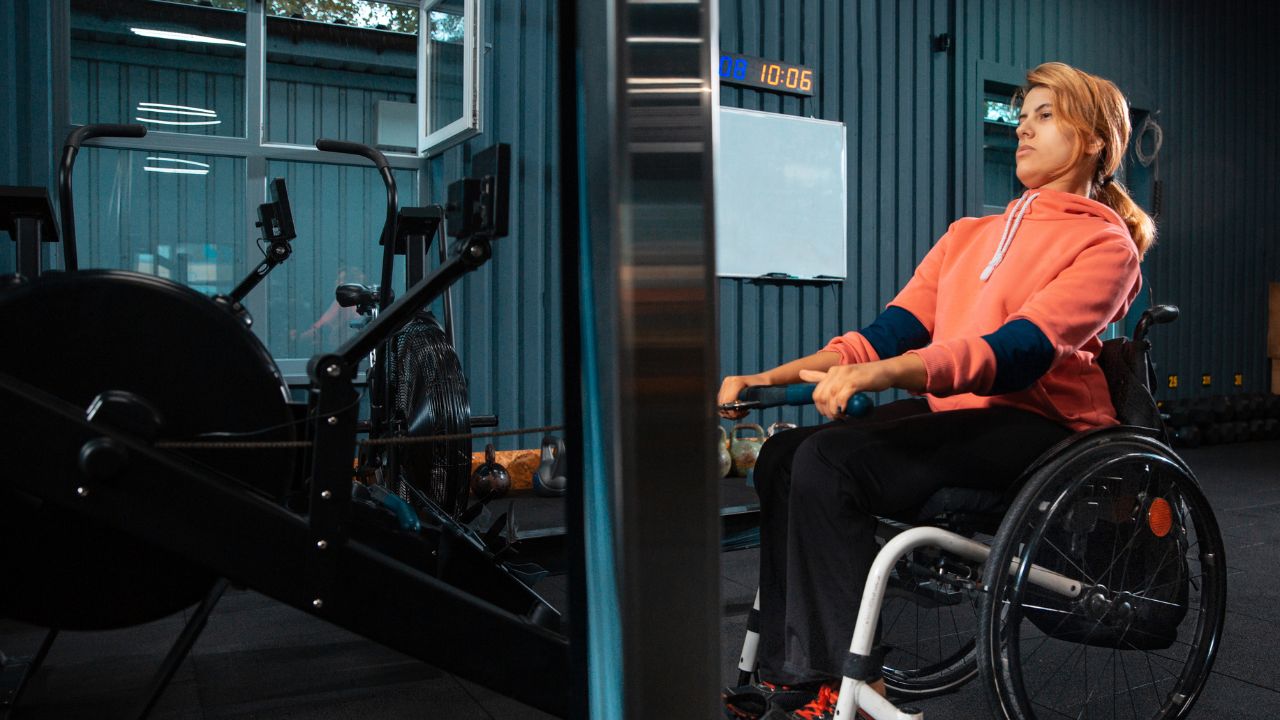Have you ever wondered, “Why do I have big calves?” It’s a common concern for many individuals, and the answers may surprise you. Several elements contribute to the size of your calves, from genetics to lifestyle factors. In this extensive blog post, we will delve deeps into the various aspects that could influence your calves’ size, providing you with insights and understanding.
The Genetics Puzzle
Genetics plays a pivotal roles in shaping our physical attributes; big calves are no exception. If you’ve ever looked at your family and noticed a similar calf structure, you can likely attribute it to your genetic makeup. The distribution of muscle fibres and the overall muscle potential is often inherited, laying the foundation for the size of your calves.
However, it’s essential to note that genetics isn’t the sole factor. Environmental and lifestyle factors can also contribute significantly, creating a unique interplay that defines the size and shape of your calves.
Hormones and Their Impact
Hormones are the chemical messengers that regulate various physiological processes in our bodies. In the context of calf size, hormones like growth hormone and testosterone can play a crucial role. These hormones influence muscle growth and development, potentially contributing to the size of your calves.
For instance, individuals with higher levels of testosterone may experience more significant muscle development, including the calves. Understanding the hormonal aspect can provide valuable insights into why your calves may be larger than others.
Physical Activity and Calve Development
Engaging in specific physical activities can directly impact the size of your calves. Regular weight-bearing exercises, such as running, walking, and weightlifting, stimulate muscle growth. The calf muscles, actively involved in these activities, undergo hypertrophy, leading to an increase in size over time.
If you’ve been consistently engaging in activities that heavily involve your calf muscles, it’s only natural for them to develop and grow in size. However, balancing exercise and recovery is essential to avoid overtraining, which can have counterproductive effects.
The Influence of Lifestyle Choices
Beyond genetics and physical activity, lifestyle choices can significantly contribute to the size of your calves. Factors like diet, hydration, and even footwear can affect calf development. Proper nutrition ensures your muscles receive the necessary nutrients for growth, while hydration supports overall muscle function.
Additionally, the type of footwear you choose can affect how your calf muscles are engaged during daily activities. Wearing heels, for example, places more emphasis on the calves, potentially leading to increased muscle size over time.
Psychological Impact of Calf Size
The size of your calves can also psychologically impact your self-esteem and body image. Society’s beauty standards often dictate what is considered attractive, and individuals with big calves might feel self-conscious or face societal pressures.
Exploring Medical Factors
In some cases, radical medical conditions can contribute to the size of your calves. Conditions like lymphedema or specific hormonal imbalances may lead to localized swelling or muscle development. If you’re concerned about the size of your calves, consulting with a healthcare professional can help rule out any potential medical issues.
Cultural Perspectives on Calf Size
Cultural norms and perceptions of beauty vary worldwide, and what is considered attractive in one culture may differ in another. Some cultures may admire muscular calves as a symbol of strength and vitality, while others may have different ideals. Understanding the cultural context can provide a broader perspective on why big calves may be more or less accepted in various societies.
Embracing Diversity in Body Types
It’s crucial to celebrate and embrace the diversity of body types. Everyone is unique; genetics, lifestyle, and cultural influences contribute to our characteristics. Instead of fixating on societal standards, focus on appreciating the strength and functionality of your body. The journey towards self-love often begins with accepting and celebrating the aspects that make you distinctly you.
Impact of Weight and Body Composition
Body weight and overall body composition also affect calves’ size. Individuals with a upper body fat percentage may have larger calves due to the presence of adipose tissue in the area. On the other hand, those with a lower body fat percentage may showcase more defined muscles.
Achieving a healthy and balanced body composition through a combination of regular exercise and a nutritious diet can positively influence the appearance of your calves.
The Role of Age in Calf Development
Our bodies undergo natural changes as we age, and muscle mass may decrease. However, age can also change fat distribution, potentially affecting the size of your calves. Understanding the role of age in calf development can provide insights into the natural processes that occur over time.
Balancing Cardio and Strength Training for Calves
A harmonious balance between cardiovascular exercise and strength training is essential for overall fitness and calf development. Cardiovascular activities, such as running and cycling, engage the calf muscles in repetitive movements, contributing to endurance and stamina.
On the other hand, incorporating targeted strength training exercises, such as calf raises and leg presses, helps promote muscle hypertrophy. Striking a balance between these two forms of exercise can lead to well-defined and proportionate calf muscles.
Impact of Posture on Calf Appearance
Believe it or not, your posture can influence how your calves appear. Poor posture, such as slouching or leaning forward, can alter the alignment of your lower body, placing uneven stress on the calf muscles. This uneven stress may contribute to asymmetrical development or discomfort.
Maintaining good posture benefits your overall musculoskeletal health and ensures that your calf muscles are engaged in a balanced manner during various activities.
The Psychological Connection Between Body Image and Calf Size
The psychological connection between body image and calf size is a complex interplay of societal standards, personal perceptions, and self-esteem.
If you’ve ever wondered, “Why do I have big calves?” It’s essential to recognize that beauty is subjective and varies from person to person. Embracing your unique features and rejecting unrealistic ideals can help you develop a healthier self-image.
Calf Size and Athletic Performance

The size of athletes’ calves can directly impact their performance in certain sports. Athletes in sports that require explosive movements, such as sprinting or jumping, may naturally develop larger calf muscles. These muscles contribute to the power and force needed for quick and dynamic movements.
Understanding the connection between calf size and athletic performance highlights the human body’s adaptability in response to specific training demands.
Role of Circulation in Calf Development
Proper blood circulation is essential for overall muscle health, including the calves. Impaired circulation can lead to conditions like oedema, where fluid accumulates in the tissues, potentially affecting the size of your calves. Lifestyle choices, such as prolonged periods of sitting or standing, can impact circulation and warrant attention.
Incorporating activities that promote circulation, such as regular movement breaks, can positively influence the health and appearance of your calf muscles.
Understanding the Impact of Shoe Choices on Calves
The type of shoes you wear can impact the development of your calf muscles. High-heeled shoes, for example, increase calves’ stress, potentially leading to muscle hypertrophy. Conversely, flat shoes or those with proper arch support may distribute the load more evenly.
Considering the role of footwear in calf development provides an additional perspective when exploring the factors contributing to big calves.
Unraveling the Myth of Spot Reduction
Spot reduction, or targeting specific body areas for fat loss or muscle gain, is a persistent myth.Understanding the limitations of spot reduction can help set realistic expectations regarding calf size and appearance.
Psychological Impact of Societal Standards on Calf Size
Societal standards of beauty often influence how individuals perceive their bodies, including the size of their calves. Media portrayals and cultural trends can create unrealistic expectations, leading to feelings of inadequacy or dissatisfaction. Breaking free from these societal pressures involves challenging conventional norms and embracing a more inclusive definition of beauty.
If you’ve ever questioned, “Why do I have big calves?” consider the role of societal standards in shaping perceptions and strive to redefine beauty on your terms.
The Intersection of Gender and Calf Size
Gender can also play a role in the size and appearance of calf muscles. Hormonal differences between men and women, particularly in testosterone levels, contribute to variations in muscle mass. Exploring the intersection of gender and calf size provides insights into the biological factors influencing this aspect of physical appearance.
Understanding these nuances can help individuals appreciate and celebrate the diversity of body types across genders.
The Impact of Aging on Calf Size
As we age, our bodies undergo natural changes in muscle mass, fat distribution, and overall composition. The impact of ageing on calf size may involve a combination of factors, including hormonal changes, decreased physical activity, and changes in body composition. Recognizing and adapting to these changes can contribute to a healthier approach to ageing.
Exploring Cultural Beauty Standards Worldwide
Cultural beauty standards vary significantly globally, influencing perceptions of attractiveness and desirability. Some cultures may place a premium on muscular and well-defined calves, associating them with strength and vitality. In contrast, others may prioritize different aspects of physical appearance. Understanding these cultural nuances offers a broader perspective on the diversity of beauty ideals.
The Connection Between Posture and Calf Size
Posture is a crucial factor in the body’s overall alignment, influencing the engagement of various muscle groups, including the calves. Poor posture can leads to imbalances in muscle development and potentially contribute to discomfort or asymmetry. Exploring the connection between posture and calf size sheds light on maintaining proper alignment for overall musculoskeletal health.
Emotional Resilience and Body Image
Developing emotional resilience is crucial for maintaining a positive body image, especially when grappling with concerns about calf size. Society’s beauty standards often perpetuate unrealistic ideals, making it essential to cultivate a mindset that values individuality and uniqueness. Building emotional resilience involves:
- Recognizing and challenging negative self-perceptions.
- Fostering self-acceptance.
- Embracing the beauty in diversity.
The Influence of Cultural Media on Body Image
Media, including advertisements, television, and social media, significantly shape cultural perceptions of beauty. Images presented in the press often adhere to specific standards, influencing how individuals perceive their bodies. Understanding the influence of cultural media on body image provides a critical lens through which to assess and challenge societal norms.
Addressing Concerns About Calf Size with Professionals
If you consistently question, “Why do I have big calves?” seeking guidance from healthcare and fitness professionals can provide personalized insights. A medical professionals can rule out any underlying medical conditions, while a fitness expert can offer tailored advice on exercise routines and lifestyle modifications. Addressing concerns with professionals ensures a holistic approach to understanding and addressing calf size.
Self-Exploration and Acceptance
Embarking on a journey of self-exploration and acceptance is a transformative process. If you’ve ever wondered why your calves are on the larger side, exploring and understanding your body can lead to a deeper appreciation for its uniqueness. Embracing self-acceptance involves letting go of societal expectations and embracing the beauty inherent in your individuality.
Building Confidence Through Physical Activity
Engaging in regular physical activity not only contributes to overall healths but also plays a crucial role in building confidence. Whether through cardiovascular exercise, strength training, or yoga, physical activity positively affects mental and physical well-being. Building trust through physical activity involves recognizing your body’s capabilities and celebrating its strength.
The Holistic Approach to Calf Size
In conclusion, understanding the factors influencing calf size involves adopting a holistic perspective. Genetics, hormones, lifestyle choices, and societal influences all contribute to the unique characteristics of your calves. Instead of fixating on a single factor, embrace your body’s complexity and appreciate it for the incredible vessel that it is.




